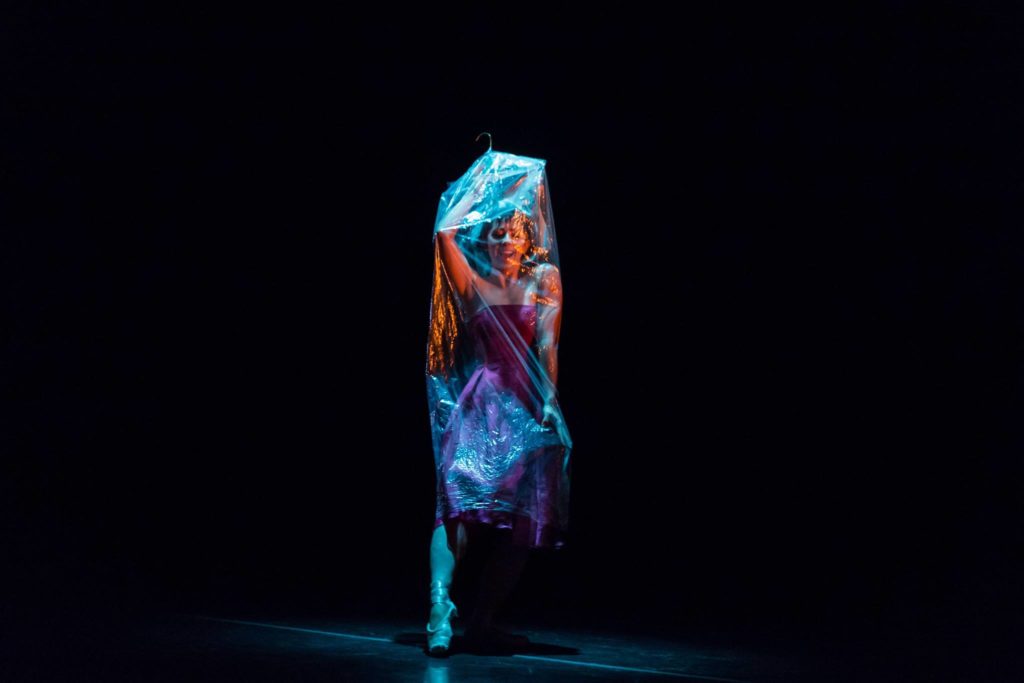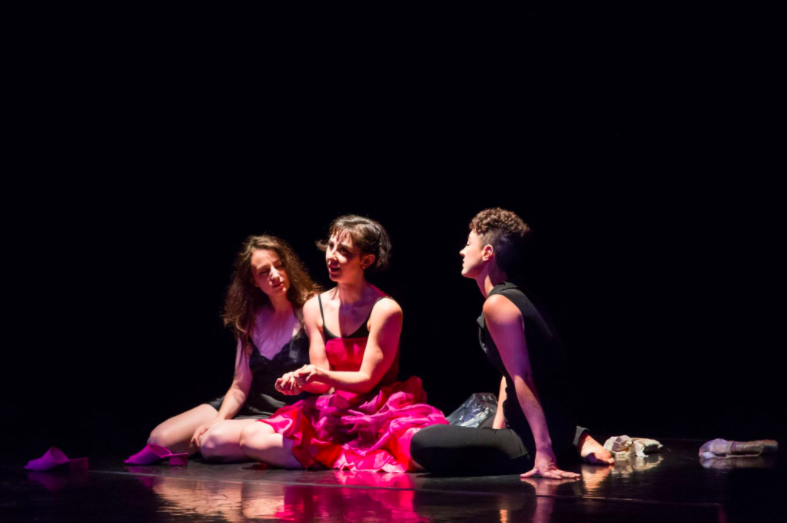Montreal, Québec
Willow White attends a workshop performance of The Gentle Art of Punishment and urges us to keep an eye out for its ongoing development:
When I walked into the the Maison de la Culture Maisonneuve on the first of August, I was expecting to watch a sort of epiloguee to the performance I’d seen earlier this summer, Docile Bodies. Performance company WIG IN A BOX advertised this performance, titled The Gentle Art of Punishment, as an extension of Docile Bodies, first performed at La Chapelle Scenes Contemporaines and the St. Ambroise Montreal Fringe Festival. What I experienced was very different. While Docile Bodies was all about the masculine — the cast portrayed soldiers who grappled with their violent acts — The Gentle Art of Punishment is all about the feminine. It’s risky, unsettling, and unexpectedly fun. The collaborators of The Gentle Art of Punishment seek to explore how women can form a sense of self under the systems and institutions that shape them. The program explains: “Here is our love-hate letter to the fucked up ways of living; our essential and unhealthy memories, places and people that make up our lives.”

The Gentle Art of Punishment by WIG IN A BOX. Photo by Jules Bédard
Like Docile Bodies, The Gentle Art of Punishment is inspired by a chapter of the same name in Michel Foucault’s Discipline and Punish and has been created through a process of collective creation and devising. Three of the six original performers remain: Lucy Fandel, Emily Sirota, and Natalie Liconti. Joseph Browne and Darah Miah have stayed on as sound designer and lighting designer respectively. Rather than feeling like a lesser version of Docile Bodies, The Gentle Art of Punishment feels cohesive, concise, and complete. The performance is made up of a series of vignettes woven together with sound, light, dance, and music. The performance opens with Sirota strolling on stage and throwing her arms wide like a presenter at a beauty pageant. The monologue that follows is just the first of a series of hyper-feminine characterizations: the ballerina, the daughter, the child actress. Alternatively, there are characters that rebel against idealized femininity: the female soldier, the boxer, the S&M enthusiast.
Browne has created an eerie and powerful soundscape that includes music ranging from David Bowie’s “TVC 15” to 50 Cent’s “Candy Shop.” One of the most powerful moments in the performance occurs when Browne plays a 1990’s TV interview with a 15-year-old Drew Barrymore. Liconti sits on stage in a white, childish dress and mouths Barrymore’s words, while Sirota takes on the role of the interviewer. In the interview, Barrymore has just left rehab, and the interviewer – in a deep, male, English accent – asks personal questions about her struggles with addiction in childhood. Liconti brings Barrymore’s vulnerability to life as she bows her body forward into a smaller shape and is compelled by the authoritative interviewer to apologize for her actions and encourage other youngsters to choose a different path.

The Gentle Art of Punishment by WIG IN A BOX. Photo by Jules Bédard
Notably, all three performers depict girlhood throughout the performance, emphasizing how expectations of perfect femininity shape young women. At one point, Fandel appears alone on stage wrapped in a plastic garment bag and wearing a 1950’s era, pink prom dress. She frantically prances around the stage, a wide, uncanny smile stretched across her face. She later recalls her childhood dance classes. She describes watching her body in the mirror, trying to force herself into the perfect shape while the dance teacher yells out “good,” “bad,” “mediocre.” You don’t need to have been a dance kid to relate to Fandel’s obsessive pursuit of perfection.
There is an uncomfortable link between the depictions of girlhood obedience and adult experiences of sex. Near the end of the performance, all three performers congregate on stage. In black lingerie, Sirota recounts her deepest S&M fantasies. She grapples with her preference for being the subordinate. After all, she says, “revolution is exhausting.” She finds being the sub empowering and pleasurable, while at the same time expresses discomfort about how her desire complicates her own feminist politics. Her monologue is a powerful encapsulation of the ideological struggles underlying the performance as a whole.
The Gentle Art of Punishment is a beautiful, tragic, and darkly comic portrayal of the feminine. It has prompted my own internal exploration about what it means to be a woman; the good, the bad, and the mediocre.
WIG IN BOX is continuing to workshop The Gentle Art of Punishment and plan to tour with it this winter. Keep an eye on their Facebook page for more information.
This post originally appeared on alt. theatre on September 8, 2017. It has been reposted with permission.
This post was written by the author in their personal capacity.The opinions expressed in this article are the author’s own and do not reflect the view of The Theatre Times, their staff or collaborators.
This post was written by Willow White.
The views expressed here belong to the author and do not necessarily reflect our views and opinions.

















